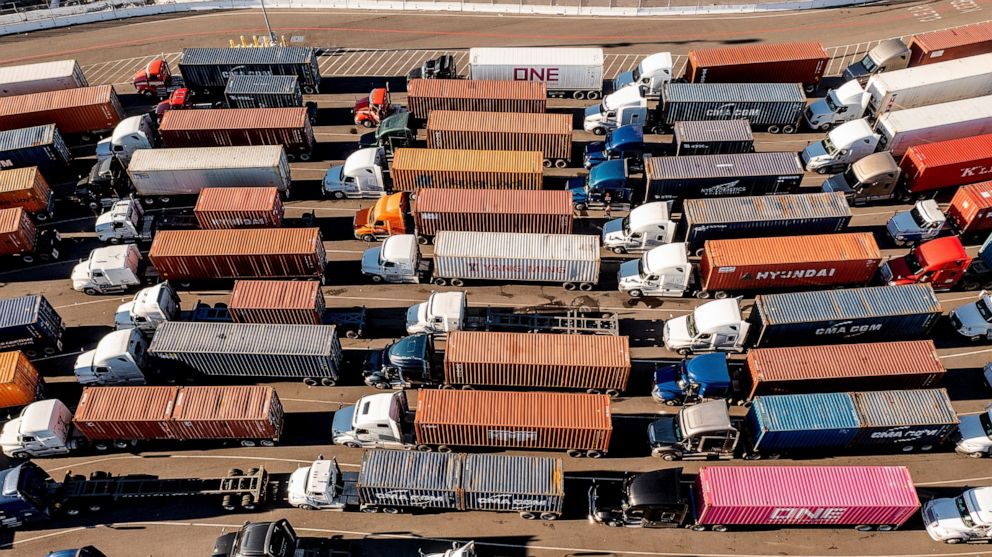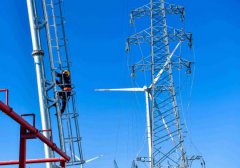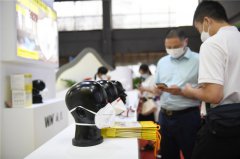Key reason for supply shortages: Americans keep spending
Take a step back from the picked-over store shelves, the stalled container ships and the empty auto showrooms, and you’ll find a root cause of the shortages of just about everything you’d want to buy
November 15, 2021, 4:44 PM
7 min read
Share to FacebookShare to TwitterEmail this article
3:43
Catch up on the developing stories making headlines.
The Associated PressDETROIT -- Take a step back from the picked-over store shelves, the stalled container ships and the empty auto showrooms, and you’ll find a root cause of the shortages of just about everything.
Even as the pandemic has dragged on, U.S. households flush with cash from stimulus checks, booming stock markets and enlarged home equity have felt like spending freely again — a lot. And since consumer demand drives much of the U.S. and global economies, high demand has brought goods shortages to the U.S. and much of the world.
Add the fact that companies are ordering — and hoarding — more goods and parts than they need so they don’t run out, and you end up with an almost unquenchable demand that is magnifying the supply shortages.
That’s where a big problem comes in: Suppliers were caught so flat-footed by how fast pent-up spending surged out of the recession that they won't likely be able to catch up as long as demand remains so robust. That’s especially so because Americans, still hunkered down at home more than they did before the pandemic, continue to spend more on goods — electronics, furniture, appliances, sporting goods — than on services like hotels, meals out and movie tickets. All that demand for goods, in turn, is helping to accelerate U.S. inflation.
Unless spending snaps sharply back to services — or something else leads people to stop buying so much — it could take deep into 2022 or even 2023 before global supply chains regain some semblance of normalcy.
“Demand is completely skewed,” said Bindiya Vakil, CEO of Resilinc, a consulting firm that helps companies manage supply chains. “This has now become more and more painful by the day.”
One reason people may eventually stop spending so much is that everything simply costs more now. Consumer prices in the U.S. skyrocketed 6.2% over the past year as food, gasoline, autos and housing catapulted inflation to its highest pace since 1990. The laws of gravity suggest that the cumulative effect of so much inflation will eventually exert a brake on spending.
For now, though, manufacturers foresee no end to heavy demand — and no end to beleaguered supply chains or spiking inflation pressures. A chronic lack of computer chips has forced Ford Motor Co., for instance, to revamp its system of ordering parts that require long periods from order to delivery to try to address shortages.
“It’s highlighted that the “just-in-time” operating model that’s been prevalent in autos may not be the right operating model,” Hau Thai-Tang, Ford’s chief operations and product officer, told analysts.
Smaller companies, too, have felt compelled to build up as many supplies as they can so they can still make products. Moriarty’s Gem Art near Chicago, a family business for 40 years, has been stocking up on gold, silver and platinum to make necklaces and rings, desperate not to run out of supplies as holiday orders pick up.
“We’re ordering a lot more than what we actually have orders for — just in case,” said Jeff Moriarty, the marketing manager.
Even a normal post-holiday shopping lull, though it might help, isn’t expected to be enough to unclog ports, speed shipping traffic or allow factories to replenish inventories.
“The baseline expectation for improvement is around the middle of 2022,” said Oren Klachkin, lead U.S. economist for Oxford Economics. “But I think the risks of that happening later are fairly high.”
Though Americans have increasingly ventured out in recent months, the balance between spending on goods and services remains skewed. The pent-up demand that followed the economic recovery is still tilted toward goods like furniture and cars and less toward haircuts, concerts and restaurant meals. Though services spending has grown in recent months, it isn't nearly enough to close the gap.
Since April 2020, consumer spending on goods has jumped 32%. It's now 15% above where it was in February 2020, just before the pandemic paralyzed the economy. Goods account for roughly 40% of consumer spending now, up from 36% before the pandemic.









